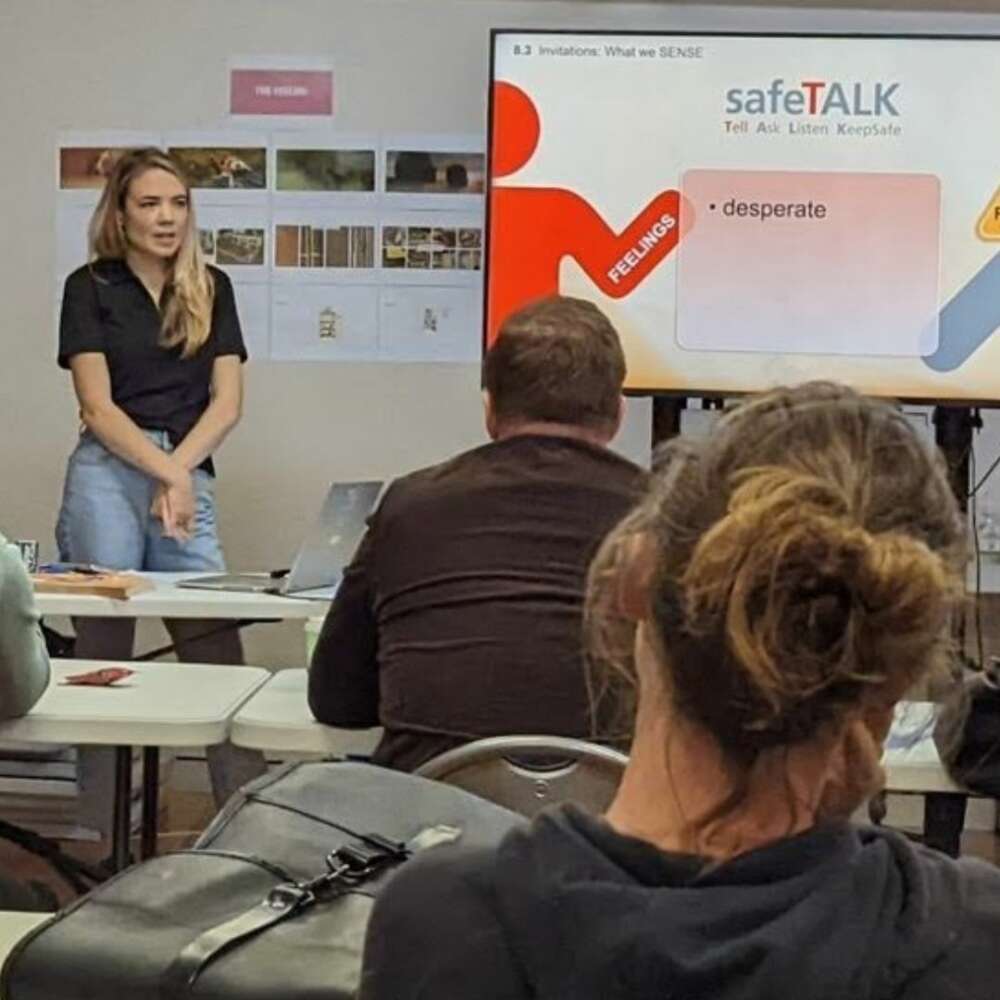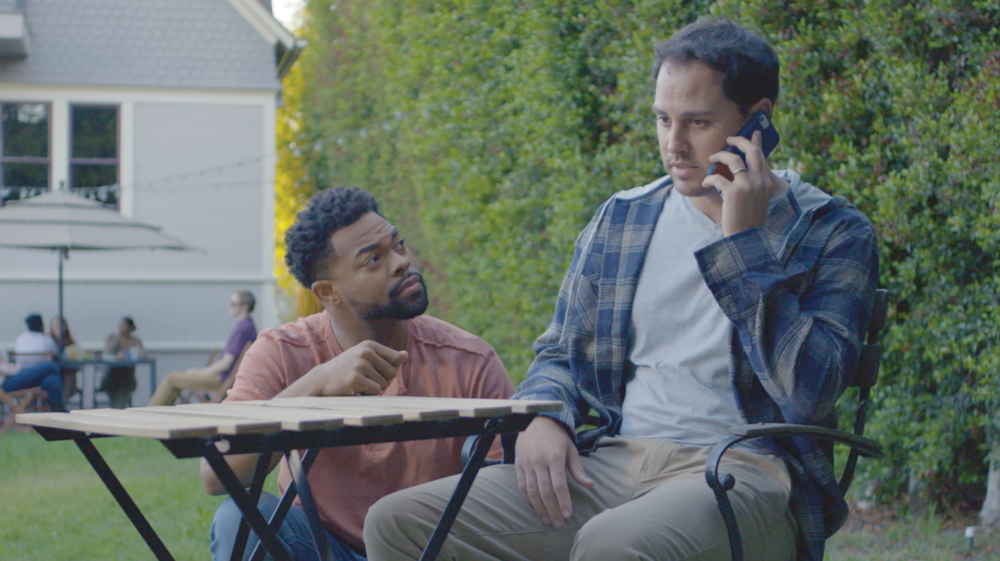Feeling overwhelmed and not knowing what to do when a family member was suicidal led Anthea Jirgens to a career focussed on suicide prevention.
Now she trains others in how to respond to people experiencing suicidal thoughts and behaviours.
Should we talk about suicide or not?
Ms Jirgens delivers programs in suicide prevention for LivingWorks as a Suicide Prevention Coordinator.
She says one of the most prevalent suicide myths is that talking about suicide with someone who is suicidal can make it worse or will lead that person closer to taking actions to end their life.
In fact, she says the evidence is the opposite.
‘You can’t put thoughts into somebody’s head.
‘They already know it’s an option,’ she says.
By avoiding talking about it, the affected person can ‘think they are hurting everyone around them, that everyone around them is pretending it’s not happening and no one wants to talk about this’.
This can lead to more shame and stigma.
But Ms Jirgens says if you can talk about it in a calm, open and honest discussion you can actually de-escalate the situation.
‘Once somebody who is experiencing thoughts of suicide is able to have a direct and open chat with someone they’re close with or even someone from Lifeline, their suicidal intent actually decreases because you are removing that stigma,’ she says.

Suicide prevention through LivingWorks training
LivingWorks can provide training to parents and organisations on suicide prevention.
Ms Jirgens’ role includes training local heath districts all around NSW in a program called ASIST, to up-skill workers to be able to identify if a person could be suicidal, talk to them about it and know where to refer them.
The aim is to skill more touch points in the community to be able to talk about suicide.
All Lifeline volunteers are ASIST trained and Ms Jirgens encourages people to call them especially when the wait times for clinical pathways are too long.
Social interventions

When Ms Jirgens’ family supported a family member experiencing suicidal thoughts she says ‘we thought we should never talk about it’ even though we knew suicidal ideation was happening.
‘It’s funny I thought that about suicide. But I don’t think that about anything else. For example, when they’re grieving, I know people need support in that,’ she said.
Ms Jirgens said outside of Lifeline her family couldn’t find community support that didn’t have extensive wait times.
‘I said to my Mum ‘They’ll be dead by then’.’
That’s when she became ‘obsessed’ about social interventions aimed at addressing how to keep the person safe until they can get into a clinical pathway.
‘We don’t have enough clinical staff in Australia and all the projections are we are not going to fix that problem in the next ten years,’ says Ms Jirgens.
Suicide methods and hotspots
However in her work life, when it comes to the training she delivers, there is one thing she doesn’t talk about and that is methods, particularly location which can become a hotspot.
‘When someone is in psychological distress experiencing thoughts of suicide, their cognitive function is quite low and if they see a method listed, especially if it was successful, people will copy that method,’ she said.
Her suicide intervention skills training extends to working in other areas of the community including areas that have fictional portrayals of suicide.

Most recently training was delivered to the cast and crew of the new STAN series ‘Totally Completely Fine’.
It’s a series about suicide prevention from the perspective of a lady who inherits a house in a suicide hotspot.
She is forced to do interventions and goes from doing all the wrong things in episode 1 to doing the right things in episode 2 —essentially what is known as a Safe Talk.
Living Works provided the Safe Talk training which includes how to identify if someone is suicidal, how do I ask the question and where do I send them for immediate help?
Suicide trends in Australia
According to the latest Australian Bureau of Statistics data, middle age men in Australia are still the largest group dying by suicide.
Ms Jirgnes notes the statistics for young people under the age of 25 and older people over the age of 85 are increasing.
‘We are also seeing a pretty incredible increase for Indigenous and LGBTQIA+ communities as well,’ she said.
Ms Jirgens says there are lots of reasons proposed for this increase.
These include the isolation of the Covid-19 lockdowns, an increase in the amount of our social connection through technology and the decrease in religious affiliation which was a protective factor against suicide.
‘We don’t necessarily feel a part of a broader community anymore,’ Ms Jirgens says.
Where to get help?
If you are at risk of suicide it’s important to know suicide is not the only way out.
If you need help it’s available 24 hours, 7 days a week.
Call:
Lifeline on 13 11 14.
Suicide Callback Service 1300 659 467.
MensLine Australia 1300 789 978
Kids Helpline (for young people aged 5 to 25 years) 1800 551 800
Standby – Support after suicide 1300 727 247
For more on this theme, go to:
